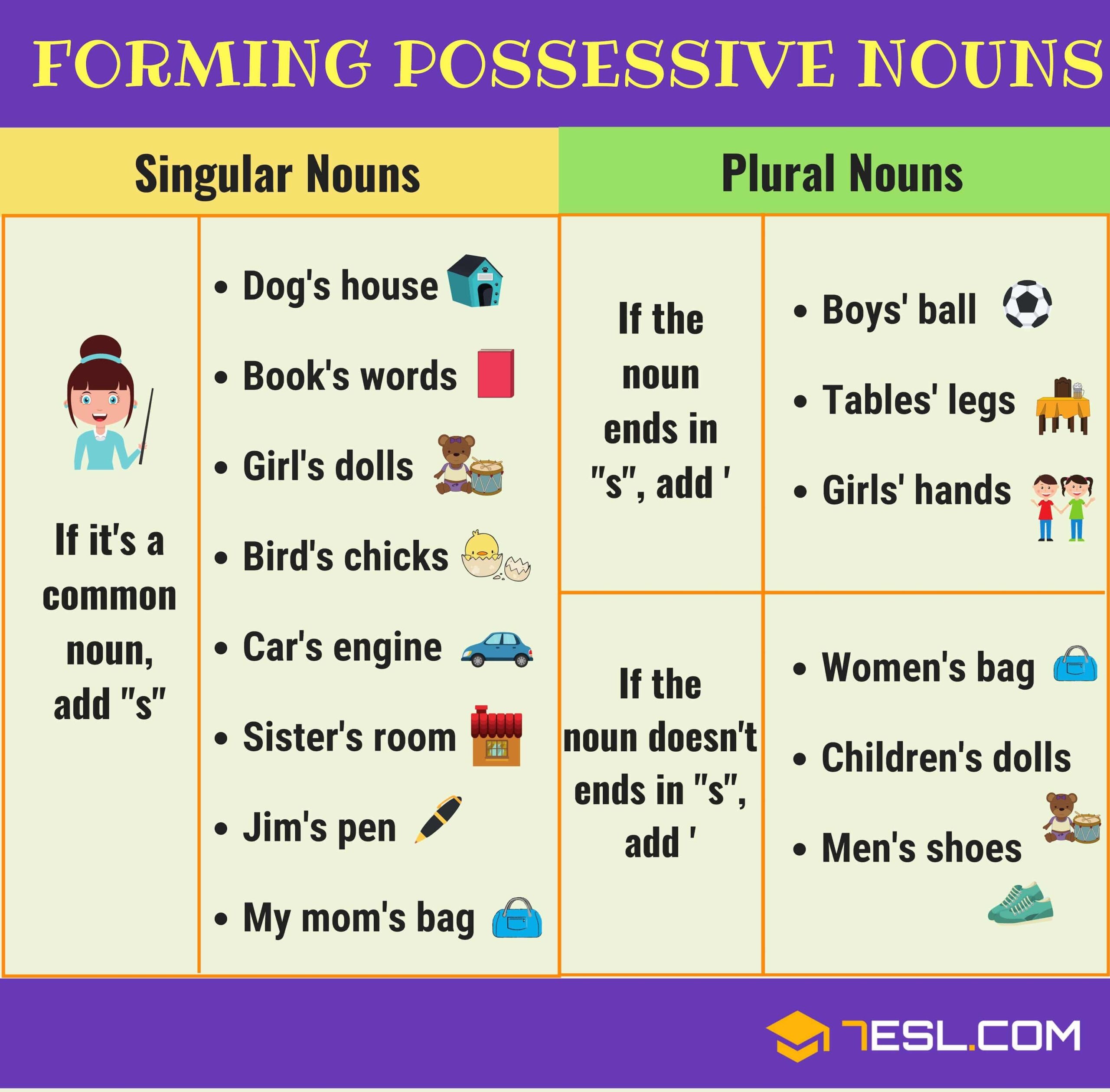When it comes to grammar, possessive nouns play an important role in indicating ownership or possession. A possessive noun shows that a noun has ownership or possession of something. It is a way of expressing that something belongs to someone or something else.
For example, in the sentence “The dog’s bone,” the possessive noun is “dog’s” because it shows that the bone belongs to the dog. Possessive nouns are commonly used in the English language to clarify who or what owns or possesses an object.
Examples of Possessive Nouns
1. The cat’s toy is missing.
In this sentence, the possessive noun is “cat’s” because it shows that the toy belongs to the cat. Without the possessive noun, the sentence would simply state “The cat toy is missing,” which does not convey ownership.
2. Sarah’s car is parked in the driveway.
In this example, the possessive noun is “Sarah’s” because it indicates that the car belongs to Sarah. Without the possessive noun, the sentence would read “Sarah car is parked in the driveway,” which is grammatically incorrect.
3. The teacher’s classroom is decorated for the holidays.
Here, the possessive noun is “teacher’s” because it shows that the classroom belongs to the teacher. Without the possessive noun, the sentence would lack clarity about who the classroom belongs to.
4. The company’s profits have increased this quarter.
In this sentence, the possessive noun is “company’s” because it indicates that the profits belong to the company. Without the possessive noun, the sentence would not specify who the profits belong to.
5. My friend’s birthday is next week.
Here, the possessive noun is “friend’s” because it shows that the birthday belongs to my friend. Without the possessive noun, the sentence would not specify whose birthday is coming up.
Overall, possessive nouns are an essential part of the English language and help clarify ownership or possession in sentences. By using possessive nouns correctly, you can ensure that your writing is clear and easy to understand.
